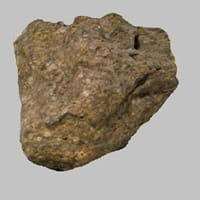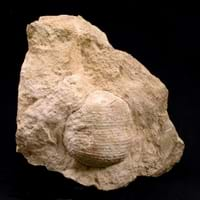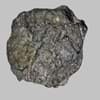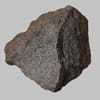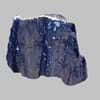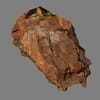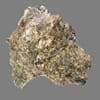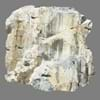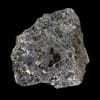Definition
Tuff is a type of rock made of volcanic ash ejected from a vent during a volcanic eruption
Limestone is a sedimentary rock composed mostly of calcite and aragonite, which are different crystal forms of calcium carbonate
Discoverer
Unknown
Belsazar Hacquet
Etymology
From a Latin word tophous then in Italian tufo and finally tuff
From lime and stone in late 14th Century
Class
Igneous Rocks
Sedimentary Rocks
Sub-Class
Durable Rock, Medium Hardness Rock
Durable Rock, Medium Hardness Rock
Group
Volcanic
Not Applicable
Other Categories
Fine Grained Rock, Opaque Rock
Fine Grained Rock, Opaque Rock
Texture
Clastic, Pyroclastic
Clastic or Non-Clastic
Color
Brown, Grey, Yellow
Beige, Black, Blue, Brown, Cream, Gold, Green, Grey, Light Green, Light Grey, Linen, Pink, Red, Rust, Silver, White, Yellow
Durability
Durable
Durable
Scratch Resistant
Yes
Yes
Appearance
Dull, Vesicular and Foilated
Rough and Banded
Interior Uses
Decorative Aggregates, Entryways, Flooring, Homes, Interior Decoration
Decorative Aggregates, Interior Decoration
Exterior Uses
As Building Stone, As Facing Stone, Garden Decoration, Office Buildings, Paving Stone
As Building Stone, As Facing Stone, Garden Decoration, Office Buildings
Other Architectural Uses
Curbing
Curbing
Construction Industry
Building houses or walls, Construction Aggregate
Cement Manufacture, Cobblestones, for Road Aggregate, Production of Glass and Ceramics, Raw material for the manufacture of mortar, Roadstone, Source of calcium
Medical Industry
Not Yet Used
In Chemical and Pharmaceutical Industry, Medicines and Cosmetics
Antiquity Uses
Artifacts, Monuments, Sculpture, Small Figurines
Artifacts, Monuments, Sculpture, Small Figurines
Commercial Uses
Creating Artwork
Animal feed filler, As a Feed Additive for Livestock, Paper Industry, Raw material for manufacture of quicklime, slaked lime, Soil Conditioner, Used in aquariums, Whiting material in toothpaste, paint and paper
Types
Welded tuff, Rhyolitic tuff, Basaltic tuff, Trachyte tuff, Andesitic tuff and Ignimbrite.
Chalk, Coquina, Fossiliferous Limestone, Lithographic Limestone, Oolitic Limestone, Travertine, Tufa
Features
Always found as volcanic pipes over deep continental crust
Host Rock for Lead, Stalactites and stalagmites are formed from this rock, Zinc and Copper Deposits
Archaeological Significance
Famous Monuments
Easter Island in the Polynesian Triangle, Pacific Ocean
Acropolis of Athens in Greece, Agia Sophia in Istanbul, Turkey, Al Aqsa Mosque in Jerusalem, Angkor Wat in Cambodia, Big Ben in London, Charminar in Hyderabad, India, Chhatrapati Shivaji Terminus in Maharashtra, India, Chichen Itza in Mexico, Empire State Building in New York, Khajuraho Temples, India, Kremlin in Moscow, Louvre in Paris, France, Neuschwanstein in Bavaria, Potala Palace in Lahasa, Tibet, Wailing Wall in Jerusalem
Famous Sculptures
Data Not Available
Ajanta Caves in Maharashtra, India, Elephanta Caves in Maharashtra, India
Formation
Tuff is formed when large masses of ash and sand which are mixed with hot gases are ejected by a volcano and avalanche rapidly down its slopes.
Limestone is a sedimentary rock which is mainly made up of calcium carbonate.
Mineral Content
Calcite, Chlorite
Calcite, Chert, Clay, Dolomite, Quartz, Sand, Silt
Compound Content
Hydrogen Sulfide, Sulfur Dioxide
Aluminium Oxide, NaCl, CaO, Iron(III) Oxide, FeO, MgO
Types of Metamorphism
Burial Metamorphism, Cataclastic Metamorphism, Contact Metamorphism, Hydrothermal Metamorphism, Impact Metamorphism, Regional Metamorphism
Not Applicable
Types of Weathering
Biological Weathering, Chemical Weathering, Mechanical Weathering
Biological Weathering, Chemical Weathering, Mechanical Weathering
Types of Erosion
Chemical Erosion, Coastal Erosion, Glacier Erosion, Sea Erosion, Water Erosion, Wind Erosion
Chemical Erosion, Coastal Erosion
Grain Size
Fine Grained
Fine Grained
Fracture
Uneven
Splintery
Porosity
Highly Porous
Less Porous
Luster
Vitreous to Dull
Dull to Pearly
Cleavage
Not Available
Non-Existent
Toughness
Not Available
1
Specific Gravity
2.73
2.3-2.7
Transparency
Opaque
Opaque
Density
1-1.8 g/cm3
2.3-2.7 g/cm3
Resistance
Heat Resistant, Impact Resistant, Pressure Resistant, Wear Resistant
Pressure Resistant
Deposits in Eastern Continents
Asia
Afghanistan, Armenia, Azerbaijan, Burma, Cambodia, China, India, Indonesia, Iran, Japan, Malaysia, Mongolia, Nepal, North Korea, Pakistan, Saudi Arabia, Syria, Taiwan, Thailand, Turkey, Vietnam, Yemen
Brunei, India, Indonesia, Malaysia, Singapore, Thailand, Vietnam
Africa
Cameroon, Cape Verde, Eritrea, Ethiopia, Kenya, Libya, Madagascar, Nigeria, Rwanda, South Africa, Sudan, Uganda
Cameroon, Chad, Ghana, Kenya, Malawi, Sudan, Tanzania, Togo, Zambia, Zimbabwe
Europe
France, Georgia, Germany, Greece, Iceland, Italy, Netherlands, Poland, Portugal, Spain, United Kingdom
United Kingdom
Others
Antarctica, Hawaii Islands
Not Yet Found
Deposits in Western Continents
North America
Canada, Costa Rica, Panama, USA
USA
South America
Argentina, Bolivia, Brazil, Chile, Ecuador, Paraguay
Colombia
Deposits in Oceania Continent
Australia
Central Australia, Western Australia
Adelaide, New Zealand, Queensland, Tonga, Victoria, Yorke Peninsula
All about Tuff and Limestone Properties
Know all about Tuff and Limestone properties here. All properties of rocks are important as they define the type of rock and its application. Tuff belongs to Igneous Rocks while Limestone belongs to Sedimentary Rocks.Texture of Tuff is Clastic, Pyroclastic whereas that of Limestone is Clastic or Non-Clastic. Tuff appears Dull, Vesicular and Foilated and Limestone appears Rough and Banded. The luster of Tuff is vitreous to dull while that of Limestone is dull to pearly. Tuff is available in brown, grey, yellow colors whereas Limestone is available in beige, black, blue, brown, cream, gold, green, grey, light green, light grey, linen, pink, red, rust, silver, white, yellow colors. The commercial uses of Tuff are creating artwork and that of Limestone are animal feed filler, as a feed additive for livestock, paper industry, raw material for manufacture of quicklime, slaked lime, soil conditioner, used in aquariums, whiting material in toothpaste, paint and paper.
